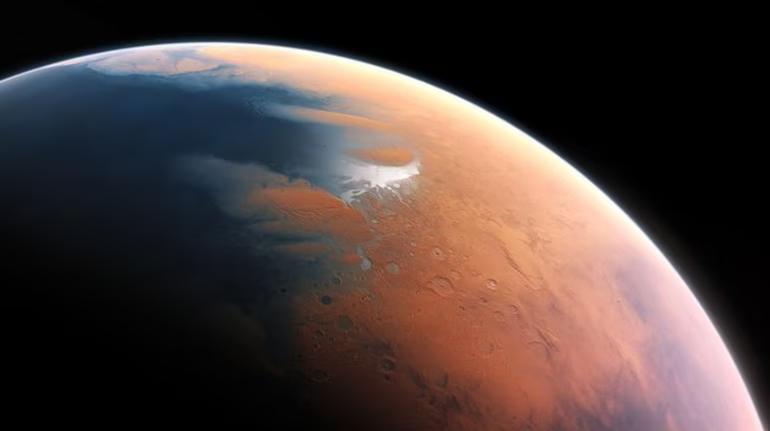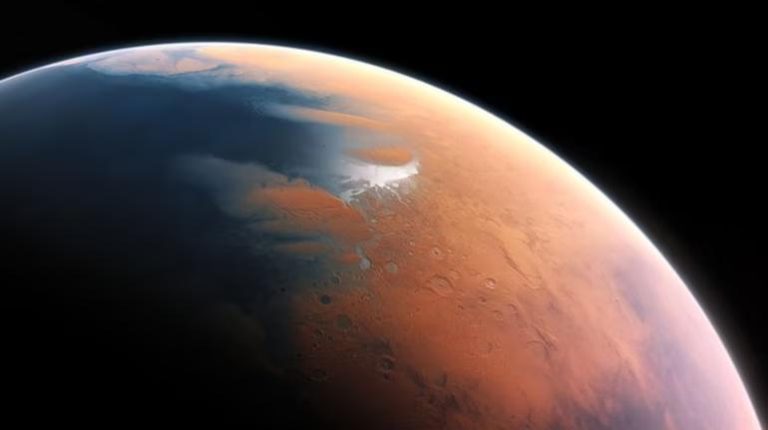
Mars may have once had rain & snowfall, finds new study
A recent study by the University of Colorado Boulder has shed new light on the history of Mars, suggesting that the Red Planet may have once experienced rainfall and snowfall. The study, published in the journal Nature, provides further evidence that Mars was once a much more hospitable place, with conditions that could have supported life.
For years, scientists have been studying the Martian surface, searching for signs of water and life. While there is evidence that at least some water existed on the surface of Mars around 4 billion years ago, the source of that water has remained a mystery. However, a new study has provided a significant breakthrough, suggesting that Mars may have once had a watery past.
According to the study, the Martian surface was once much more active, with rivers and lakes flowing across the planet. The researchers used data from NASA’s Mars Reconnaissance Orbiter to study the planet’s geology, and found evidence of ancient riverbeds and lakebeds that were once filled with water.
The team analyzed the shape and size of the valleys and channels on Mars, and found that they were similar to those found on Earth, which are typically formed by flowing water. The researchers also found evidence of sedimentary rocks, which are formed from the erosion of rocks by water, further supporting the idea that Mars once had a watery past.
But what’s most exciting about this study is the suggestion that Mars may have once had snowfall and rainfall. The researchers found evidence of ancient glaciers and ice sheets, which would have required snow and rain to form. This is a significant finding, as it suggests that Mars may have once had a climate that was similar to Earth’s, with liquid water flowing on the surface.
The study’s lead author, Dr. Paul Niles, said that the findings are “exciting and unexpected”. “We’ve been studying Mars for a long time, and we’ve always assumed that it was a dry, barren planet,” he said. “But these new findings suggest that Mars may have once been a very different place, with liquid water flowing on the surface.”
So, what could have caused Mars to lose its watery past? The researchers suggest that a combination of factors may have contributed to the drying up of the planet. One possibility is that Mars may have undergone a significant change in its orbit around the sun, which could have led to a decrease in the amount of water that was able to exist on the surface.
Another possibility is that Mars may have lost its magnetic field, which would have left the planet vulnerable to solar winds and radiation. This could have caused the water on the surface to evaporate, leading to the formation of the dry, barren landscape that we see today.
The study’s findings have significant implications for the search for life on Mars. While there is currently no evidence of life on the planet, the discovery of ancient water and ice suggests that life could have once existed on Mars. The study’s lead author, Dr. Niles, said that the findings are “a reminder that we should keep exploring Mars, and searching for signs of life”.
As scientists continue to study Mars, they may uncover even more evidence of the planet’s watery past. The discovery of ancient water and ice on Mars is a significant breakthrough, and could have significant implications for our understanding of the planet’s history and potential for life.






